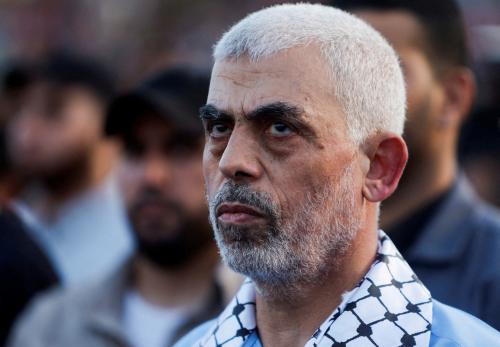In advance of the much-anticipated Congressional testimony next week of Ryan Crocker, the ambassador to Iraq, and Gen. David Petraeus, the top United States military commander, many have agreed on what appear to be two crucial realities in Iraq: there is military momentum for combined American-Iraqi forces and there is political paralysis in Baghdad. While the recent Government Accountability Office report on the 18 benchmarks set out by Congress in May gave a very pessimistic view, our data above, culled from official Iraqi and American sources and press reports, support a more mixed picture.
Unfortunately, at the moment the political paralysis seems to be a more powerful force than the military momentum, and progress in security is unsustainable without sectarian compromise among Iraq’s Kurds, Sunni Arabs and Shiites. The country remains very violent, and the economy rather stagnant.
Nonetheless, the military momentum appears real, despite the tragic multiple truck bombings in Ninevah Province on Aug. 14 that made that month the deadliest since winter. Overall, civilian fatality rates are down perhaps one third since late 2006, though they remain quite high. There are also signs that roughly six of Iraq’s 18 provinces are making significant economic and security gains, up from three a year ago. The story in Sunni-dominated Anbar Province is by now well known: attacks in the city of Ramadi are down 90 percent, and the economy is recovering. But there is progress in several regions with more complex sectarian mixes as well.
Given the continuing violence, and the absence of political progress, Iraq is not now on a trajectory toward sustainable stability — and America is not yet on a clear path to an exit strategy. With sectarian tensions so high, and hatreds so freshly stoked, Iraq’s own dynamics would probably lead to an accelerating civil war if left unchecked.
| Category | Aug. 2003 | Aug. 2004 | Aug. 2005 | Aug. 2006 | Aug. 2007 |
| U.S./Other Foreign Troops in Iraq (in thousands) | 139/22 | 140/24 | 138/23 | 138/19 | 162/12 |
| U.S. Troop Deaths | 36 | 65 | 85 | 65 | 85 |
| Iraqi Security Forces (in thousands) | 35 | 91 | 183 | 298 | 360 |
| Iraqi Security Force Fatalities | 65 | 65 | 282 | 233 | 100 |
| Daily Attacks by Insurgents and Militias | 18 | 77 | 70 | 160 | 120 |
| Prisoners Held by U.S./Iraq (in thousands) | 6 | 6 | 14 | 27 | 60 |
| Daily Attacks in Region Near Mosul | 1 | 5 | 10 | 15 | 8 |
| Sunni Volunteers Working With U.S. and Iraqi Forces (in thousands) | 0 | 0 | 0 | 0 | 40 |
| Number of U.S./Iraqi Daily Patrols | 500 | 600 | 600 | 1,000 | 4,500 |
| Iraqi Civilian Deaths | 700 | 1,500 | 2,000 | 3,000 | 2,500 |
| Iraqi Civilians Newly Displaced by Violence (monthly; in thousands) | 25 | 25 | 15 | 100 | 80 |
| Multiple-Fatality Bombings | 4 | 13 | 27 | 52 | 30 |
| Oil Production (in millions of barrels per day; prewar: up to 2.5) | 1.4 | 2.1 | 2.2 | 2.2 | 1.7 |
| Household Fuel Supply (as percentage of estimated need) | 57 | 84 | 96 | 71 | 43 |
| Electricity Production (average gigawatts; prewar: 4.0) | 3.3 | 4.7 | 4.0 | 4.4 | 4.1 |
| Unemployment Rate (percent) | 50 | 35 | 33 | 33 | 33 |
| Resources Going From Baghdad to Average Iraqi Province (in millions of dollars per year) | 0 | 0 | 25 | 50 | 100 |
| Iraqis Supporting Strong Central Government (percent) | 85 | 80 | 70 | 65 | 55 |
View the Op-Chart
(graphic by Amy Unikewicz)



Commentary
Op-edThe State of Iraq: An Update
September 4, 2007